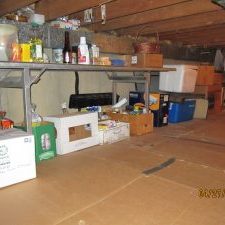WHAT IS (and IS NOT) INSPECTED?
When hiring a home inspector, it is important that you understand what will and will not be inspected. Please read over your inspection agreement carefully and ask any questions before entering into an inspection agreement.
This page will give you a brief synopsis of how a home inspection is conducted.
For a more detailed breakdown of individual components, please click the title of each system below.
Also, see our Accessibility Page for more about our process.
HOME INSPECTION STANDARDS of PRACTICE
The State of Illinois Home Inspector License Act includes Home Inspector Standards of Practice, which all licensed Home Inspectors must adhere to.
Please read the Standards of Practice and ask about anything that is unclear.
WHAT IS INSPECTED
ROOFS
We will inspect the roof covering, drainage, flashings, chimneys and roof penetrations.
EXTERIOR
We will inspect the exterior wall covering, flashing, trim, doors, decks, balconies, stoops steps, porches, railings, vegetation and grading, patios, sidewalks and driveways.
STRUCTURAL
We will inspect the foundation and framing (where accessible), floor, wall and attic systems. We will also be looking out for any signs of water entering the structure.
PLUMBING
We will inspect the water supply, fixtures, faucets, drains, waste and vent systems, water heaters, flues and chimneys, drainage pumps, sump pumps and locate the main water and gas shut offs.
ELECTRICAL
We will inspect the service drop, service entrance conductors, cables and raceways, main disconnects, interior components of service panels, overcurrent protection devices. GFCI, and a representative number of installed lighting fixtures, switches and receptacles.
HVAC
We will inspect the permanently installed heating and cooling systems, visible ducts, registers and their supports, the insulation and vapor retarders in unfinished spaces, attic and crawlspace ventilation, and mechanical ventilation systems in kitchens and bathrooms.
INTERIOR
We will inspect the walls, floors, ceilings, steps, stairways, railings, countertops, installed cabinets, doors, windows, garage and garage door openers.
FIREPLACES
We will inspect the fireplace, accessible vents, flues and chimneys. We will not light a fire.
WHAT IS NOT INSPECTED
WE CANNOT INSPECT WHAT WE CAN'T SEE
Systems or components that are not readily accessible cannot be inspected. Some examples are:
- Underground sewer lines
- Anything within a wall cavity
- Electrical
- Insulation
- Plumbing pipes
- Systems that have been shut down
- Systems or components obscured by furniture or household items
It is imperative that all utilities (water, gas and electric) be on to the house and all systems operational (not winterized) prior to the inspection.

A HOME INSPECTOR IS A GENERALIST
In short, home inspectors are trained in identifying proper design and function of all of a homes systems.
When we identify a system or component that appears deficient, we will recommend you follow up with a specialist (plumber, electrician, etc.) for a more in depth evaluation and corrective action.
**NOTE - to avoid any conflict of interest, we will not offer to repair nor make any recommendations of companies to repair. All work should be done by licensed and insured contractors**
For more about this topic, see our Generalist vs. Specialist page.
DANGEROUS SITUATIONS
If your inspector were to get injured (or worse) during your inspection, that would not be good for anyone. Inspectors may not inspect certain items if it poses a risk to people or property. Some common safety concerns are:
Roofs:
- Height
- Pitch (slope)
- Structural integrity
- Weather
Crawlspaces / Attics:
- Access hatch
- Clearance
- Debris
- Rodents
- Mechanical equipment
- Water
If anything was deemed dangerous at the time of inspection, your inspector will note it in the report along with any area that was able to be inspected.
For a detailed explanation check out our page about Home Inspector Accessibility.